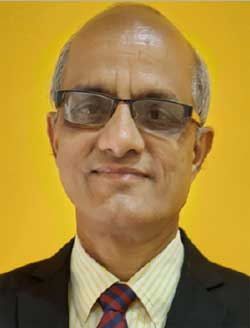|
RE-INVIGORATING INDIAN MEDICAL DEVICES INDUSTRY
|
 |
Mr K L
Sharma
Former Jt. Secretary, Drug & Food Regulation
Government Of India |
Shri K L Sharma with his four decades of experience in
the Government of India as a public policy practitioner,
including as a Joint Secretary, Ministry of Health &
Family Welfare was instrumental in streamlining the
processes and rationalizing rules for regulation of
drugs, cosmetics, medical devices and clinical trials.
This included framing of the Medical Devices Rules,
2017. During the process, he interacted and coordinated
many deliberations with a number of associations and
companies in the Pharma and medical device sectors.
He has authored the best selling book, “Healing The
Pharmacy of The World” which includes the most pertinent
facets of Indian Medical Device Sector, especially those
relating to promotion of manufacturing and regulatory
controls.
In this free-wheeling exclusive interview with the,
“MEDICAL PLASTICS DATA SERVICE”, as a public policy
practitioner of four decades, he shares the insider’s
views and analysis highlighting critical issues like
factors responsible for market growth (Domestic &
Exports), ecosystem improvements required, need for a
separate regulator, role of the Industry, harmonization
of activities of various agencies, appropriateness of
the incentives including production linked incentive
schemes as announced by the GOI, need for medical device
parks and importance of innovations in the medical
device sector. Lastly he has suggested critical action
points with a view to reinvigorating Indian Medical
Device Industry.
How do you see the growth of the Indian Medical
Device Industry both for domestic and international
markets? Which will be the major factors responsible for
the growth of this sector?
Post the onset of COVID-19, all eyes are now set on
discovering India as the destination for manufacturing
of quality medical devices for meeting the global
requirements. The growing disenchantment with China, the
manufacturing factory of the world on account of both
the quality related issues and also the geo-strategic
developments, posit India as the alternative global
manufacturing base. With huge demographic dividend and
the pool of scientific and technical personnel, India
has this opportunity now knocking at its doors. The
Central government and many state governments have made
their intent clear on seizing this opportunity. However,
transition from intent to actual delivery at the ground
level will require the steely resolve and half hearted
measures will not do. Inadequate responses will only
result in squandering away the golden opportunity
bestowed by providence on this country. It will require
a new vision and also entail some tradeoffs. History is
replete with examples where industry, on a cue from the
governments, has outperformed its capacity despite major
constraints including the size of the country. South
Korea and Taiwan are two examples that have demonstrated
it over last six decades. If they could it, India can
certainly do it and do it better. The question is are we
ready for it?
Can you please shed some light on the need for
improving the Medical Device Industry ecosystem in India
particularly highlighting the priority elements of the
ecosystem?
For reaching the global scale it would be necessary to
ensure the best quality of the made in India products.
Becoming globally competitive both in terms of the
quality and prices is not an option but a prerequisite
for asserting out rightful place. The Industry realizes
that there is no future for products that do not conform
to the quality parameters. At the same time products
have to be made available at prices that are less than
the prices of products manufactured elsewhere. The scale
can be increased only if accessibility and affordability
are enhanced. The government on the other hand has come
to realize that the Indian industry suffers from a
serious cost disadvantage and it is necessary to bridge
the gap. That is a sound basis for taking action to
reboot the sector by creating a completely new ecosystem
that does not carry the past baggage. This needs to be
leveraged.
Medical Devices are an important part of healthcare
management. While WHO has identified Availability,
Accessibility, Appropriateness and Affordability as
crucial “4 As” of Medical Devices, why are Medical
Devices still included in the definition of Drugs in
India?
The medical devices continue to be treated as drugs as
the Drugs & Cosmetics Act, 1940 had been enacted keeping
in view the provisions of the Government of India Act,
1935. The usage of the medical devices and their
complexity at that point of time were nowhere closer to
what it is today. The Government of India Act, 1935 had
vested the provinces with much more authority than what
would have been vested in them under the Constitution of
India. The Drugs & Cosmetics Act, therefore, does not
appropriately reflect the current constitutional
provisions and developments that have taken place with
the intersection of physiology, engineering, chemistry,
artificial intelligence and machine learning, etc. The
current drugs law is an anachronism of a bygone era that
was based on the vestiges of the preindependence
governmental architecture and scientific developments at
that point of time. The constitutional fault-lines,
archaic laws, absence of political will and commitment
to reforms, half-hearted efforts at strengthening and
reforming the drug regulatory architecture, bureaucratic
inefficiency, poor implementation and a host of other
factors have stifled the growth of the medical devices
and pharmaceutical sectors and also permitted and
encouraged many malpractices. It needs to be recognized
that medical devices and drugs are essentially distinct
and the former belong largely to engineering field.
Their regulation calls for specific provisions. At the
same time, in view of the fact that many combination
therapeutic and diagnostic products combine drugs,
devices, and/or biological products, there will be a
need for effective coordination in the regulation of
drugs and medical devices. |
